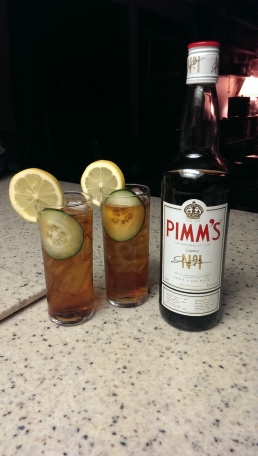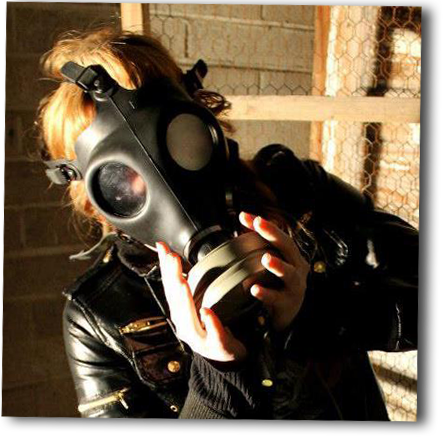by Sami
Sometimes I am inspired by my friends to write, but they might not want to recognize themselves when they read my blog later. Please forgive me while I go off in abstraction la-la-land in lieu of the usual juicy details.
Long story short I went to two different parties and found them to be drastically different. I’ll let you figure out which one I thought was more fun (nvm guessing games are tedious; I’m a “Creative”). Anyway, consider this thought experiment:
I’m beginning to identify two major structures in which a party group can operate. I’ll call them the Creatives and the Nostalgics. If the ideal goal of a party is Fun, then the two groups differ primarily in *how* they attempt to achieve Fun.
How Fun is Achieved
The Creatives are generative, operating much like an improv troupe — simultaneously approaching and redefining Fun. Imagine that a party is a collaborative art piece, and all its members riff endlessly to cascade moment after delectable moment in a very loose and self-reflective jam sesh. They don’t really know what it means until it’s up there on the canvas, and even then it’s up for interpretation.

The Nostalgics assume an ideal and seek to return to it. Basically, they’re trying to recreate a Fun they once had. End-goal in mind, for each event or even as the entire basis of their group culture, they will follow, reinforce, or bushwhack a path to the Fun. Their notion of Fun is probably just as fuzzy as that of the Creatives, given that the act of remembering makes it more or less than it actually was. The important point, however, is that they treat the goal of Fun like an ideal, regardless of their understanding of its nature.

Now, the Nostalgics aren’t always literally pining after the past. While I’ve encountered groups with a nasty infestation of the “remember whens,” there are other frameworks which can be used for this backward-sort-of-seeking of an ideal. Generally the group adopts a tradition. This could be a geek tradition or a greek tradition. It could be as focused and specific as a “What if we re-imagine Dr. Who in the pony-verse?” fanship or as vast as heteronormativity. They are fond of set activities, such as drinking games, sports, or dungeons and dragons matches, and will replicate the same activities endlessly with no truly intentional variations.
The Creatives certainly adopt frameworks, and traditions do result as a side effect of the same groups of people meeting each other repeatedly, but their understanding of the former is less permanent. Frameworks are borrowed to streamline the communication of a particular idea, and are quickly discarded when the point is made. In other words, frameworks are temporary tools.
Strengths and Weaknesses
Using frameworks can actually be considered a key strength. The inclusivity of the Nostalgic group is only limited by its frameworks. So long as an individual can follow and adapt to a specific framework, they will be able to operate within the group.
In the Creative group, inclusivity is more related to performance, in the artistic sense of the word. An individual is valuable to the group while they are able to provide fresh perspective, enriching content, desirable challenge, or whatever is up in that group’s particular market. The Creatives are seeking talent, rather than submission to a framework. This hefts more of the responsibility onto the individual’s ego, and will often create insecurity for newcomers (or, really, everyone involved). Creatives risk collapse when they are not able to foster a healthy environment for tinkering with fun the way they do.
The strength of improvising is that submission to such frameworks is not required. In this way, the group is able to be more inclusive of truly non-conforming identities. The nerd might seek the nerd-focused Nostalgic group, the lesbian just the same with her own. The Creatives eschew such outward-facing identities, except as they are necessary to invite new members, and can be a good home for those with more fluid personalities. Overall, what I enjoy most is the freedom from submission.
When the nostalgic group attempts improvising outside of their frameworks with any kind of real fluidity, the result is the surreal. Some individual will get some notion to try on a new behavioral hat, and his friends will respond with, “Whoa, what’s going on right now?” or “Did that just happen?” or “Did I take drugs?”
This surreal effect is a symptom of this weakness: There’s a paradox of looking backwards in that one cannot truly enjoy the moment one is trying to create. The Nostalgic evaluates passing moments (simultaneously looking to future moments) as candidates for the great scrapbook of Fun. What’s missing? The present.
Of course, you may have caught on to my distaste for quasi-spiritual hippie-dippie assertions, but let’s try “situational awareness is important” as a less-cheesy alternative to “you have to live in the moment.” There might be something wrong with me for not putting a whole lot of value in reminiscing. Maybe I had a shitty middle school experience, have no patience for memorizing trivia, or got a 2 on my AP US exam…but I find I’m having the most fun when I keep myself present. The Creatives understand this intrinsically.

How do you know which group you’re in, or — if we assume groups are fairly flexible — how do you know which modality your group is operating within at any given moment?
Signifiers of the Creatives & the Nostalgics
Well, one way to figure out which group/modality you’re in is pay attention to what everyone is doing with their iPhones. Nostalgics use cameras and social media as recording devices. The Nostalgic group meta-analyzes through a rear-facing gaze. Seeing everything through an iPhone lens makes perfect sense, because these groups are very interested in curating a shared history.
Creatives are guilty of the same, of course, because that’s the current norm. But they’ll push the boundaries of social technologies by using them to augment the generative processes. They are interested in finding apps which enrich their environments, or challenging the functions of these devices by using or discussing them in a novel way. I think this is the only group which is capable of getting together for a group picture (but something crazy-rad like a human pyramid) and then entirely losing interest in the resulting image before it ever makes it to the social media.
Also, I’ll return to the idea of inclusivity and examine who really qualifies as an outsider in each group. The outsider in a Creative group will feel like the behaviors of the group are “arbitrary” or perhaps “don’t make sense.” Why has everyone decided to pass around a picture from a catalog and treat it like a piece of forensic evidence? And now they’re suddenly having a contest for the best dinosaur stomp? He’s expecting a set framework that doesn’t exist, and, in fact, as soon as he begins to identify one of the temporary frameworks, he may find that it has already been abandoned. He may be the one in the group who is asking “why don’t you want to play [this game] anymore?” The Creatives will seem to him like they idealize randomness, when in fact they focus on some unnamed goal of Fun in the same way a sculptor approaches a wet piece of clay with just the faintest glimmers of an artistic vision.
The outsider in a Nostalgic group will identify with self statements of not “fitting in” because she is “weird” or she may feel “impatient.” She is butting up against the framework which she has already rejected (or maybe never engaged with in the first place). She is out of touch with the realities which inform their interactions, and may even find some of them to be repulsive. If she takes this moment to be arrogant, then she’s already missed the point. And that is, the Nostaligics are seeking comfort on their own terms. There is an ease in their interactions which, if you can swallow the frameworks they choose, gives a sort of consistency to reality that does not quite exist among the Creatives. Being weird all the time is actually quite stressful!

Qualifiers and Exceptions
I shouldn’t pretend there’s a clear delineation between Creatives and Nostalgics, though there is such a thing as only pretending to be the former. Many times the frameworks which the Nostalgics choose are based on getting “creative,” which is not the same. Though the Nostalgics may decide to really “get out there” and “try something new,” they will treat this style of Fun as an isolated activity. E.g. Let’s All Go Rock Climbing Guise!! Also, do not confuse an entire framework of “acting creative” for Creativity, such as friends who base their entire micro-culture on getting together to throw pots and Raku (they could be either Creative or Nostalgic).
Of course, since people (me!) ricochet between various groups, they frequently experience both styles depending on the swing of the pendulum. People show up to a party and change its atmosphere (or disappear in some back bedroom). Entire groups go through changes together. I could even envision a group unit which modulates between Creative and Nostalgic modalities based on some regular change: day or night, sober or intoxicated, winter or summer.
Pushing a Group Around
With this understanding, could I feasibly push a Nostalgic group towards my preference for Creative? Like I said, I’ll see the “this is surreal” reaction if I do this. And while there is some fluidity between the two, in general they are based on competing assumptions about reality. If I try to reject a framework, the Nostalgics might feel like I’m attacking everything they hold to be good and true. Or just, like, you know, making it real tough to have a good time.
I’ve decided I’m going to push Creativity whenever I can, and when I cannot, treat whatever Nostalgic party I’m stuck in like an inside joke in my own greater pursuit of Fun. I also will be more patient during the Nostalgic moments (which build security) within typically more Creative groups.
And, always, a good Pimm’s cup will set the mood in any situation.
















 Oh. Surprise, surprise. I finally kissed a girl that I liked it.
Oh. Surprise, surprise. I finally kissed a girl that I liked it. 

